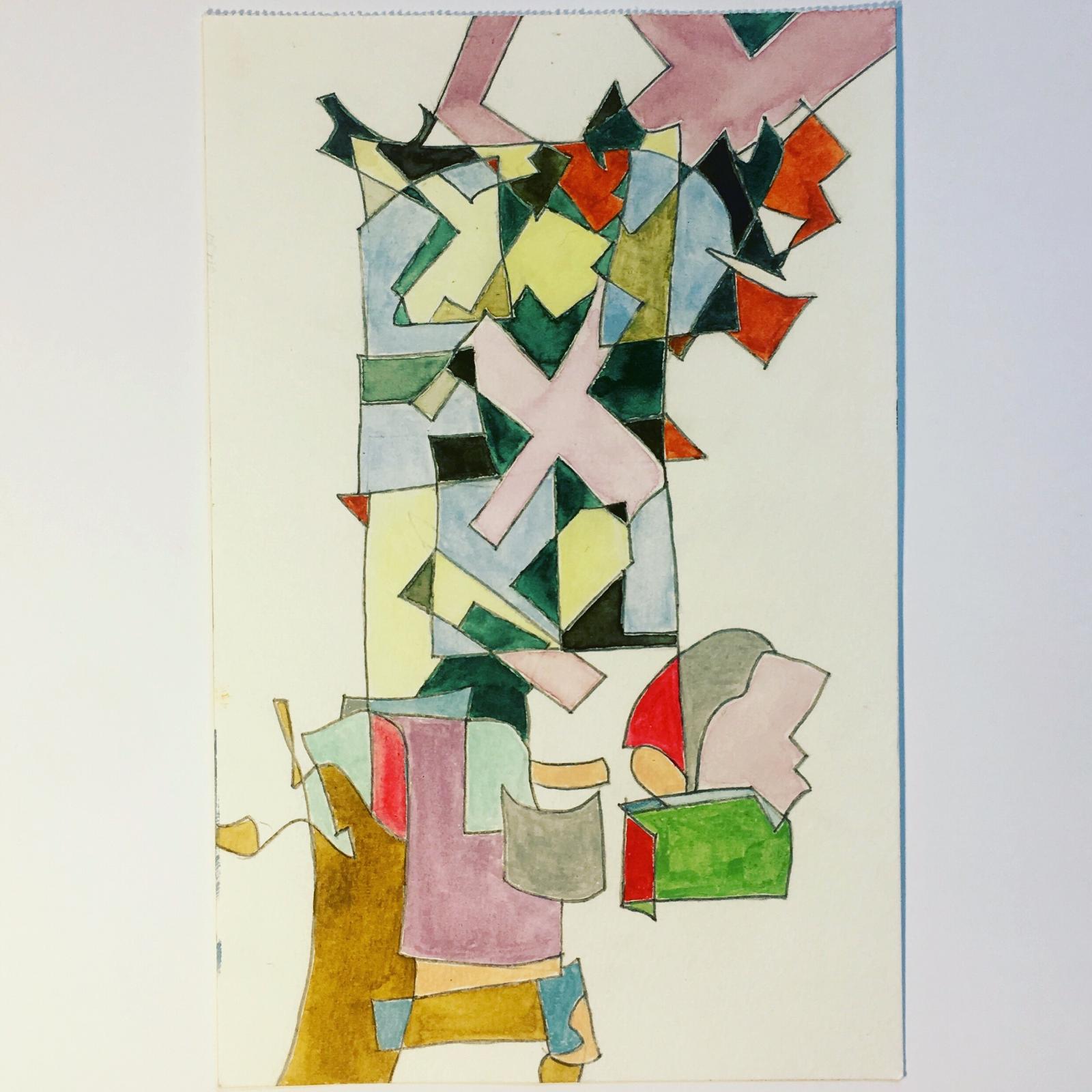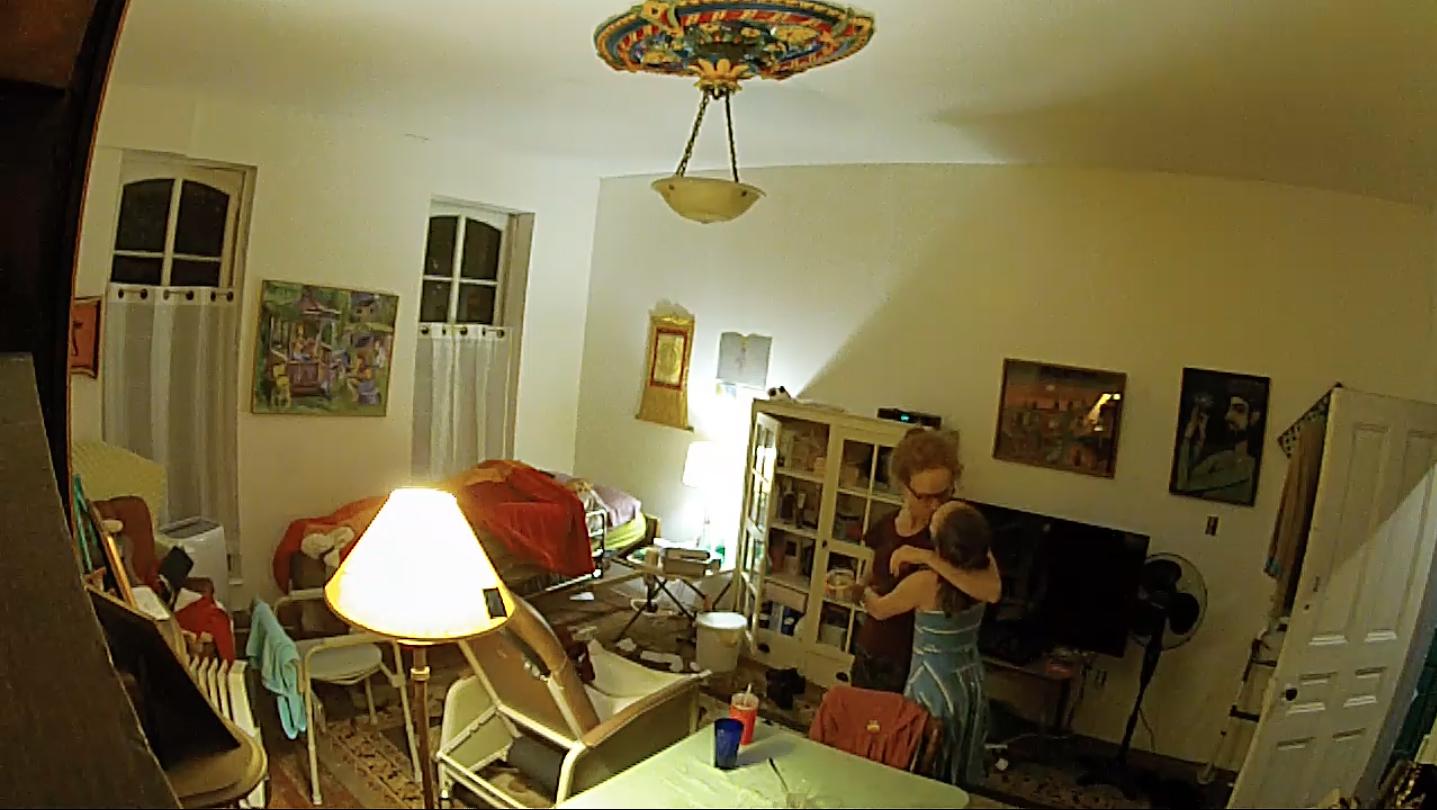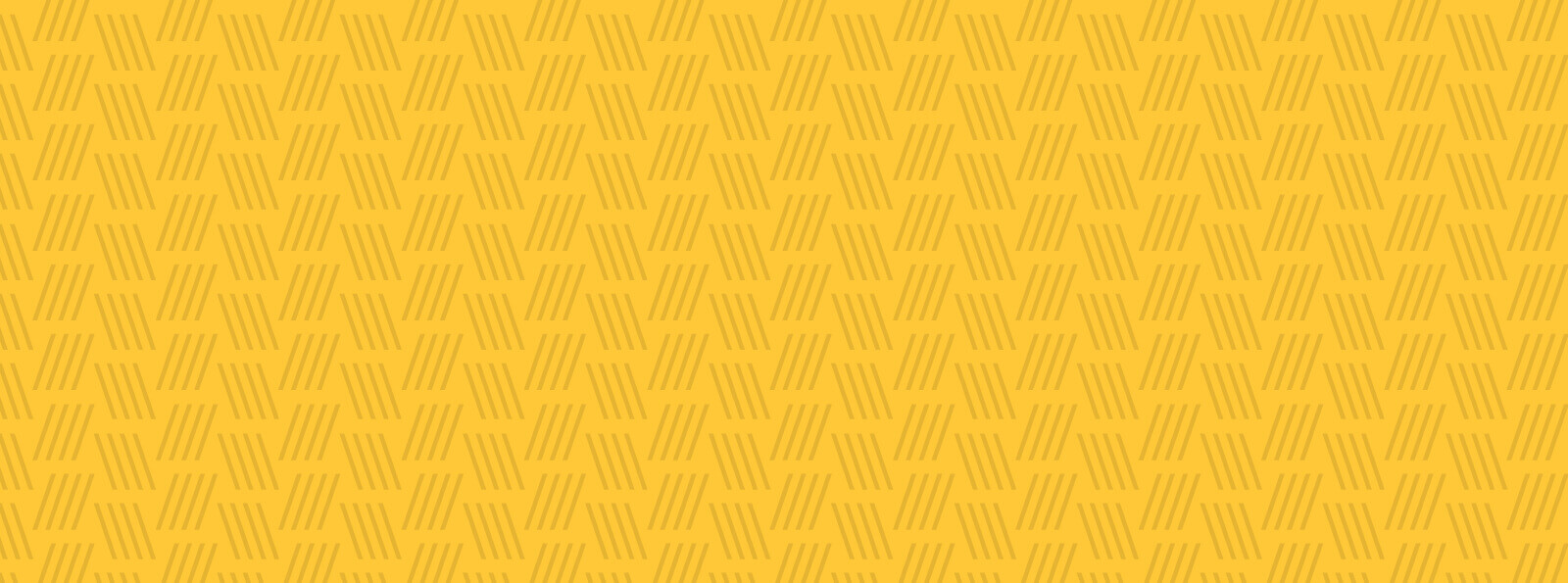About the Artist
A video artist and performer, Dominique Zeltzman researches concepts of objectification and power through the metaphor of the container as a social construct. Her work has to do with the stretchy exaggeration of time and sequence, endurance, the peripheral, and the mundane practices that catalogue cycles in our lives. After a 15 year career as a choreographer and performer in San Francisco she returned to Baltimore where she received her MFA in Imaging and Digital Art from the University of Maryland, Baltimore County. She was a 2019 Baker Awards Finalist and a 2015 Baker Artist b-grant awardee, a 2016 MSAC Individual Artist Award recipient, and a 2016 Trawick Prize finalist. She maintains a cross country painting/drawing mail art collaboration and teaches video, photography, and art appreciation at the University of Maryland, Baltimore CountyArtist's Statement
Containment, Duration, Domesticity, and Surveillance. As a performer and visual artist, my interest in mapping everyday moments through video and installation, evolved from mapping everyday movements through choreography and video. I research the concepts of objectification and power through the metaphor of the container as a social construct. The container is both a form of oppression and a set of borders we create for ourselves. Like a good parent, such an enclosure functions as a tether that allows one to wander but not stray. Every faux-brick cardboard block that friends and I used to make up the cities that snaked across our nursery school floor was a model for each of our personas: for taxonomies of class, race, religion, sexual orientation, education, political affiliation, and citizenship; and for practices of border control and punishment. By creating such classifications and parameters, we make sense of what would otherwise be chaos. Through sequestration, we at once imprison and protect, for there is safety in isolation. My work has to do with the stretchy exaggeration of time and sequence, duration, endurance, a daily litany of warnings and instructions, and the mundane practices that catalogue cycles in our lives. It looks at how different vessels and facades might capture a story or be a placeholder for the past. It is a series of incomplete, weird and fragmentary narratives, strange little histories in and of themselves. The pieces involve discomfort, vulgarity, precariousness, and the unadorned. Clunkiness is interesting. So are danger, monotony, boredom, dementia, a wasted body, leaving, ghosts, tight spaces, dirty dishes, a ladder, grime, a toilet, a sink, a stove, heels, ass, a building, a door, people, cars, my bathroom, my bedroom, a skirt, stockings, a street, the fetal position, crawling, walking, creeping, squatting, the shell, balance, and my kitchen. Extended duration in art provides an opportunity to meditate, slow down, and allow our thoughts to flow unnoticed and move beyond boredom. My endurance-oriented pieces exploit time and space, simultaneously commenting on and confronting the viewer with the psychodynamics of getting through daily life. The story, if there is one, does not dominate, but shapes one’s experience just as a passing spectator, a moving car, or a whistling teakettle might, if given attention. My house is my studio, a radical place to make art. Like all domestic interiors, the home is rarely represented in history, which usually happens outside—not in the quiet, claustrophobic spaces where the female form tries to shape itself, the body remembering things in sensual and physical ways not easily conveyed with the written word.Featured Work
Photos




Featured Work: Photos
Untitled 1
pencil, water color on paper
2019
Leaving
cotton rag inkjet print
2016 - 2019
Series of 20 paintings on photocopies of snapshots and surveillance stills, scanned, and printed again, mimic the transition and departure of the subjects who leave behind physical traces and memory.
Noelle
cotton rag inkjet print
2018
When my mother was left for dead at her assisted living facility, I committed to caring for her 24/7 and treated the experience as a living art project. A surveillance camera I installed before leaving for a five-week video job remained on after my return. The videos, culled from 300 days of footage, form a quotidian ballet as furniture position, clothing, light, and our movement changes. As I watched her steady return to the womb—legs crossed, hands clenched, knees bent, hips and trunk flexed—I was at once witnessing her death, and participating in my own. Noelle is a collection of prints and an interactive video and sound installation that uses real time compositing and chroma keying to place the viewer in the video—both the object of the camera and voyeur.
Continuum
Cotton rag paper, archival ink, archival foam core, vintage redwood
2015
Continuum is a 20' installation piece inspired by Radical Home video installation.
Videography, performance, and installation are merged in a timeline of still movements, creating an arrangement that allows the observer to dictate the figure's actions – the task she performs is contingent upon which segment they choose to view.
Videos
-
Waiting for Something to Happen
See more information about Waiting for Something to HappenWaiting For Something To Happen (8:49) a video and sound installation that juxtaposes the drama of a potential crime with the monotony of the everyday. The work incorporates Baltimore City surveillance footage, mostly recorded near my home. Over the silent clips play ambient sounds, my mother with dementia recounting her fading memories of growing up in one of the depicted neighborhoods, and my daughter and me reading statements from the attorney that provided the surveillance footage.Medium: video and soundYear: 2015Details: 08:49 -
Radical Home
See more information about Radical HomeDocumentation of a video/sound installation at Center For Art, Design, and Visual Culture UMBCMedium: video/sound installationYear: 2014Details: 20 minute loop

